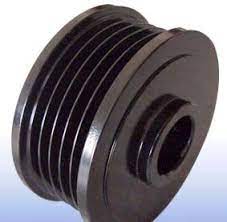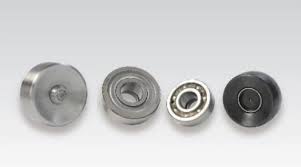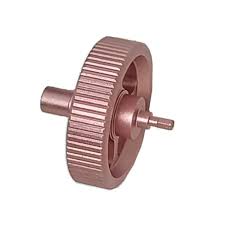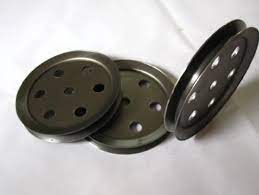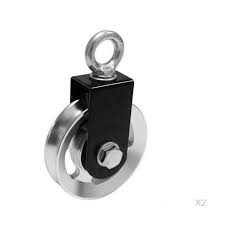Product Description
Mtd 756-5716A Riding Lawn Mower Garden Tractor Pulley
Engine Double Pulley mower deck idler DRIVE pulley Compatible with MTD 756-5716A / 756-5716/956-5716A / 956-5716
MTD TROY BILTRIDING LAWN MOWER / GARDEN TRACTOR / LAWN TRACTOR DOUBLE PULLEY 756-5716A 756-5716
REPLACES MTD # 756-5716A BUT NOT AN OEM PRODUCT — TOP-QUALITY REPLACEMENT PART
| Engine Stack Pulley | |
| ID | 1″ |
| Top OD | 3-25/64″ |
| bottom OD | 6″ |
| Height | 5-7/8″ |
| keyway | 1/4″ |
NO GENUINE OEM MTD CUB CADET TROY BILT ENGINE PULLEY 3.39″ x 6.12″ – 756-5716A
Fix my Toys SKU: MTD_756-5716A
(1) CUB 756-5716A
13A1762F571 (2011) Frame & PTO Lift
13A1762F571 (2008) PTO
13A1762F571 (2009) Frame and PTO Lift
13A1762F229 (2008) PTO
13AC762F000 (2008) PTO
13AC762F000 (2571) Frame & PTO Lift
13AC762F000 (2011) Frame & PTO Lift
13AC762F000 (2012) Frame & PTO Lift
13AC762F571 (2571) Frame & PTO Lift
13AC762F571 (2011) Frame & PTO Lift
13AC762F052 (2009) Frame and PTO Lift
13AC762F065 (2571) Frame & PTO Lift
13AC762F200 (2571) Frame & PTO Lift
13AC76LF031 (2571) Frame, PTO & Lift
13AC76LF031 (LT3800) (2011) Frame & PTO Lift
13AC76LF055 (2571) Frame, PTO & Lift
13AC76LF055 (2011) Frame & PTO Lift
13AC76LF058 (2012) Frame & PTO Lift
13AH762F052 (2009) Frame and PTO Lift
13AJ771G004 (2008) PTO
13AJ771G004 (2009) Frame and PTO Lift
13AJ771G031 (2008) PTO
13AJ771G031 (2009) Frame and PTO Lift
13AJ771G204 (2008) PTO
13AJ771G231 (2008) PTO
13AJ771G231 (2009) Frame and PTO Lift
13AJ771S004 (2571) Frame & PTO Lift
13AJ771S031 (2571) Frame & PTO Lift
13AJ771S231 (2571) Frame & PTO Lift
13AJ775G059 (2008) PTO
13AJ775S000 (2011) Frame & PTO Lift
13AJ775S059 (2571) Frame & PTO Lift
13AJ775S059 (2011) Frame & PTO Lift
13AJ77SS099 (247.289571) (2571) Frame, Battery & PTO
13AJ78SS099 (247.288841) (LT2000) (2011) Frame & PTO
13AJ78SS099 (247.288842) (2012) Frame & PTO
13AL605H057 (2009) Frame & Manual PTO
13AL771H004 (2008) PTO
13AL771H004 (2009) Frame and PTO Lift
13AL771H571 (2008) PTO
13AL771T004 (2571) Frame & PTO Lift
13AL78SS099 (247.289040) (2571) Frame, Battery & PTO
13AL78SS299 (247.289190) (2571) Frame, Battery & PTO
13AL78ST099 (247.288851) (2011) Frame & PTO
13AL78ST099 (247.288852) (2012) Frame & PTO
13AL78ST299 (247.288860) (2011) Frame, Battery & PTO
13AL78ST299 (247.288861) (2012) Frame & PTO
13AL79SS099 (247.289050) (2571) Frame, Battery & PTO
13AM761F065 (2009) Frame and PTO Lift
13AM761F265 (2009) Frame and PTO Lift
13AM762F031 (2008) PTO
13AM762F052 (2008) PTO
13AM762F065 (2008) PTO
13AM762F265 (2008) PTO
13AM772F000 (2008) PTO
13AM772F000 (2009) Frame and PTO Lift
13AM772S000 (2011) Frame & PTO Lift
13AM772S000 (2012) Frame & PTO Lift
13AM772S055 (2571) Frame & PTO Lift
13AM77LS058 (2012) Frame & PTO Lift
13AN771S099 (247.289571) (2571) Frame Assembly
13AN771S299 (247.289110) (2571) Frame Assembly
13AN772G000 (2008) PTO
13AN772G000 (2009) Frame and PTO Lift
13AN772G571 (2008) PTO
13AN772G055 (2009) Frame and PTO Lift
13AN772G200 (2008) PTO
13AN772G229 (2008) PTO
13AN772S000 (2571) Frame & PTO Lift
13AN775S000 (2012) Frame & PTO Lift
13AN775S200 (2012) Frame & PTO Lift
13AN77SS099 (247.288811) (2011) Frame, Battery & PTO
13AN77SS099 (247.288812) (2012) Frame & PTO
13AN77SS299 (247.288830) (2011) Frame, Battery & PTO
13AN77SS299 (247.288831) (2012) Frame, Battery & PTO
13AO771H055 (2008) PTO
13AO771H055 (2009) Frame and PTO Lift
13AO772G055 (2008) PTO
13AO772S055 (2011) Frame & PTO Lift
13AO785T055 (2011) Frame & PTO Lift
13AO785T058 (2012) Frame & PTO Lift
13AX771S004 (2011) Frame & PTO Lift
13AX771S004 (2012) Frame & PTO Lift
13AX771T004 (2011) Frame & PTO Lift
13AX775H031 (2008) PTO
13AX775H231 (2008) PTO
13AX90YT001 (2571) Frame, Electrical & PTO
13BC762F000 (2011) Frame & PTO Lift
13BX775H031 (2009) Frame and PTO Lift
13RC762F052 (2009) Frame and PTO Lift
13RC76LF055 (2571) Frame, PTO & Lift
13RL771H571 (2008) PTO
13RL771H229 (2008) PTO
13RM772S055 (2571) Frame & PTO Lift
13RN772G571 (2008) PTO
13RN772G055 (2009) Frame and PTO Lift
13RN772G229 (2008) PTO
13W1762F065 (2011) Frame & PTO Lift
13W1762F065 (2012) Frame & PTO Lift
13W1762F265 (2012) Frame & PTO Lift
13W2771S031 (2012) Frame & PTO Lift
13W2771S231 (2012) Frame & PTO Lift
13W2775S031 (2012) Frame & PTO Lift
13W2775S231 (2012) Frame & PTO Lift
13WC762F065 (2571) Frame & PTO Lift
13WC762F065 (2011) Frame & PTO Lift
13WC762F265 (2571) Frame & PTO Lift
13WC762F265 (2011) Frame & PTO Lift
13WC76LF031 (2571) Frame, PTO & Lift
13WC76LF231 (2571) Frame, PTO & Lift
13WJ771S231 (2571) Frame & PTO Lift
13WV771S031 (2011) Frame & PTO Lift
13WV771S231 (2011) Frame & PTO Lift
FAQ:
Notice
1. We maintain high standards of customer satisfaction! Your feedback is very important to us. Before giving us neutral or negative feedback, please contact us to satisfactorily address your concerns.
2. Please compare the good’s appearance, shape, size with your original parts before ordering.
3. Due to the different color resolution settings of the display, the CHINAMFG may have a color difference, please know it.
4. All our products are non-assembled, pictures are for reference only.
Problem with An Order?
We work hard to get everything right but mistakes happen and we want to fix them quickly, please ask any questions using the Made-in-China system before starting a dispute.
Feedback
We maintain high standards of CHINAMFG and strive for 100% customer satisfaction! If you are not satisfied with our products or services please contact us first, sincerely hope through our cooperation, we can resolve the problems smoothly.
About Us
We do retail and wholesale for gasoline chainsaw, brush cutter, grass trimmer, and other garden tool parts. Welcome here to pick out and buy.
Contact
If you have questions or problems please leave messages, we will reply to you as soon as possible.
/* January 22, 2571 19:08:37 */!function(){function s(e,r){var a,o={};try{e&&e.split(“,”).forEach(function(e,t){e&&(a=e.match(/(.*?):(.*)$/))&&1
| Certification: | CE, ISO |
|---|---|
| Pulley Sizes: | Type A |
| Manufacturing Process: | Spinning Pulley |
| Material: | Carbon Steel |
| Surface Treatment: | Baking Paint |
| Application: | Mower Tractor Snowblower |
| Samples: |
US$ 19.99/Piece
1 Piece(Min.Order) | |
|---|
| Customization: |
Available
| Customized Request |
|---|
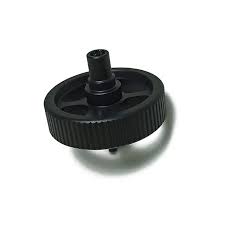
What maintenance procedures are necessary to ensure the reliability of spinning pulleys?
To ensure the reliability of spinning pulleys, certain maintenance procedures should be followed. These procedures help identify and address potential issues, prevent premature wear, and extend the lifespan of the pulleys. Here are some essential maintenance procedures:
1. Regular Inspection:
Periodic visual inspections of spinning pulleys are necessary to identify any signs of wear, damage, misalignment, or abnormal operating conditions. Inspections can help detect issues such as worn grooves, cracks, excessive belt wear, loose fasteners, or inadequate lubrication.
2. Lubrication:
Proper lubrication is crucial for the smooth operation of spinning pulleys. Lubricants reduce friction between the pulley and the belt, rope, or cable, minimizing wear and heat generation. The type and frequency of lubrication depend on the specific application and the manufacturer’s recommendations.
3. Belt Tension Adjustment:
Maintaining proper belt tension is important to prevent slippage and ensure efficient power transmission. Regularly checking and adjusting the belt tension according to the manufacturer’s guidelines or industry standards is essential. Improper tension can lead to reduced power transfer, accelerated wear, and decreased overall system performance.
4. Belt Cleaning:
Contaminants such as dust, dirt, or debris can accumulate on the pulley and the belt, affecting their performance. Regular cleaning of the pulleys and the belts with appropriate methods, such as brushing or compressed air, helps remove these contaminants and prevents their buildup.
5. Alignment Checks:
Spinning pulleys should be properly aligned to ensure smooth and efficient power transmission. Misalignment can cause increased stress on the pulleys, belts, and other power transmission components, leading to premature wear and potential system failures. Regular alignment checks using alignment tools or laser alignment systems help identify and correct misalignment issues.
6. Balancing:
Imbalanced spinning pulleys can result in vibration, which can adversely affect the overall system performance and lead to premature wear or failure of the pulleys and other components. Balancing procedures, such as adding balance weights or utilizing dynamic balancing equipment, can help minimize vibration and ensure smooth operation.
7. Repair or Replacement:
If any significant damage or wear is detected during inspections or maintenance procedures, appropriate repair or replacement actions should be taken promptly. This may involve repairing damaged pulley surfaces, replacing worn-out belts, or replacing the entire pulley if necessary.
8. Documentation and Record-Keeping:
Maintaining comprehensive records of maintenance activities, including inspection dates, lubrication schedules, adjustments, repairs, and replacements, is essential. These records help track the maintenance history of spinning pulleys, identify patterns or recurring issues, and facilitate proactive maintenance planning.
By following these maintenance procedures, the reliability and performance of spinning pulleys can be maximized, ensuring their optimal operation and contributing to the overall efficiency and longevity of the machinery or equipment they are a part of.
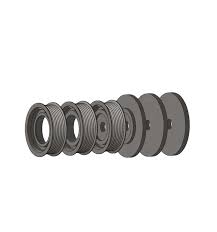
How do spinning pulleys contribute to the functioning of textile and printing machinery?
Spinning pulleys play a significant role in the functioning of textile and printing machinery, enabling various processes and operations. Here’s how spinning pulleys contribute to the functioning of these machines:
1. Tension Control:
In textile and printing machinery, spinning pulleys are used to control the tension of the materials being processed. Pulleys with adjustable positions or different sizes allow operators to regulate the tension of fabrics, threads, or printing substrates. Proper tension control ensures smooth and consistent material feed, preventing issues such as wrinkles, distortion, or uneven printing.
2. Guiding and Tracking:
Spinning pulleys are employed to guide and track materials through the textile and printing machinery. They help maintain the desired path and alignment of fabrics or printing substrates, ensuring accurate printing registration or precise fabric handling. By properly guiding the materials, spinning pulleys contribute to the production of high-quality textiles and printed materials.
3. Speed Adjustment:
Textile and printing machinery often utilize spinning pulleys to adjust the speed of material movement. By changing the size or position of the pulleys, operators can vary the speed at which fabrics or printing substrates pass through the machine. This speed adjustment capability allows for customization and optimization of production processes, accommodating different material types, printing requirements, or desired production rates.
4. Mechanical Power Transmission:
Spinning pulleys facilitate mechanical power transmission in textile and printing machinery. They are connected to drive systems, such as motors or engines, and transmit rotational power to other components, such as rollers, cylinders, or print heads. The pulleys’ rotational motion is transferred to the relevant parts of the machine, enabling the necessary movements for fabric feeding, printing, or other textile processing functions.
5. Belt and Chain Drives:
Textile and printing machinery often employ belt or chain drives, where spinning pulleys are integral components. Pulleys with compatible profiles are used to provide positive engagement with belts or chains, allowing for efficient power transmission and synchronization of machine components. These belt or chain drives enable the coordinated movement of various parts, such as print heads, fabric feed systems, or tension control devices.
6. Dyeing and Printing Applications:
In specific textile and printing processes, spinning pulleys are utilized for dyeing or printing applications. For example, in rotary screen printing, the fabric is guided through a series of spinning pulleys that carry the printing screen and ensure precise contact between the screen and fabric. This enables the transfer of dye or ink onto the fabric, resulting in intricate designs or patterns.
7. Customization and Versatility:
Spinning pulleys offer customization and versatility in textile and printing machinery. By incorporating pulleys of different sizes, materials, or designs, manufacturers can adapt the machines to various production requirements. This flexibility allows for the processing of different fabric types, printing substrates, or printing techniques, providing a wide range of options for textile and printing applications.
In summary, spinning pulleys contribute to the functioning of textile and printing machinery through tension control, guiding and tracking, speed adjustment, mechanical power transmission, belt and chain drives, dyeing and printing applications, as well as customization and versatility. These pulleys enable the smooth and efficient operation of the machines, leading to precise printing, accurate fabric handling, and enhanced production capabilities in the textile and printing industries.
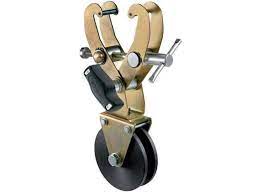
What is a spinning pulley, and how is it used in mechanical systems?
A spinning pulley is a type of pulley that rotates or spins when subjected to force or power. It is a wheel with a grooved rim designed to guide a rope, belt, or cable, allowing it to change direction and transmit mechanical power. Here’s a detailed explanation of what a spinning pulley is and how it is used in mechanical systems:
A spinning pulley consists of a central hub and a rim or groove around its circumference. The rim is specifically designed to accommodate a rope, belt, or cable, and the groove ensures that the rope or belt remains in place during operation. When force or power is applied to the rope or belt, it causes the spinning pulley to rotate.
In mechanical systems, spinning pulleys are commonly used in conjunction with other pulleys to create a mechanical advantage or to transmit power and motion between different components. Here are some key applications and uses of spinning pulleys:
1. Change Direction of Force:
A spinning pulley can change the direction of force applied to a rope or belt. By routing the rope or belt through the groove of the spinning pulley, the force can be redirected to another location or component in the system. This is particularly useful in applications where the input and output components are not aligned or when flexibility in direction is required.
2. Transmit Power:
Spinning pulleys are often used in power transmission systems to transfer mechanical power from one component to another. By connecting multiple spinning pulleys with ropes or belts, the rotation of one pulley can drive the rotation of another. This allows power to be transferred over distances and around obstacles, enabling the operation of various mechanical devices.
3. Create Mechanical Advantage:
Spinning pulleys are crucial in creating mechanical advantage by utilizing the principle of leverage. By using a combination of different-sized spinning pulleys, mechanical systems can amplify or reduce the force required to perform a particular task. This is achieved by adjusting the relative sizes of the pulleys and the number of times the rope or belt wraps around them.
4. Tensioning and Control:
Spinning pulleys are commonly employed in systems that require tensioning and control of ropes or belts. By adjusting the position and angle of the spinning pulley, the tension in the rope or belt can be controlled. This is important for maintaining proper alignment, preventing slippage, and ensuring efficient power transmission within the mechanical system.
5. Speed Control:
In some mechanical systems, spinning pulleys are used to control the speed of rotating components. By using pulleys of different sizes, the rotational speed can be increased or decreased. This is achieved by changing the ratio of the pulley diameters, which alters the speed at which the rope or belt travels around the pulleys.
Overall, spinning pulleys are essential components in mechanical systems. They enable the redirection of force, transmission of power, creation of mechanical advantage, tensioning and control of ropes or belts, and speed control of rotating components. Their versatility and ability to change the direction of force make them valuable in a wide range of applications, from simple machines to complex industrial systems.


editor by CX
2024-05-16
